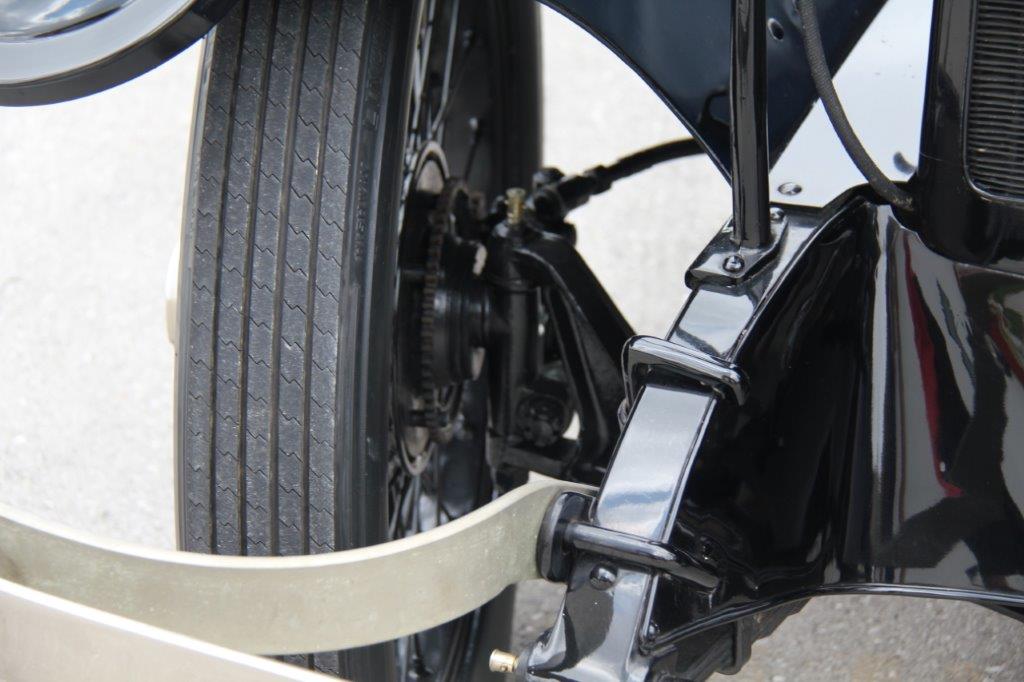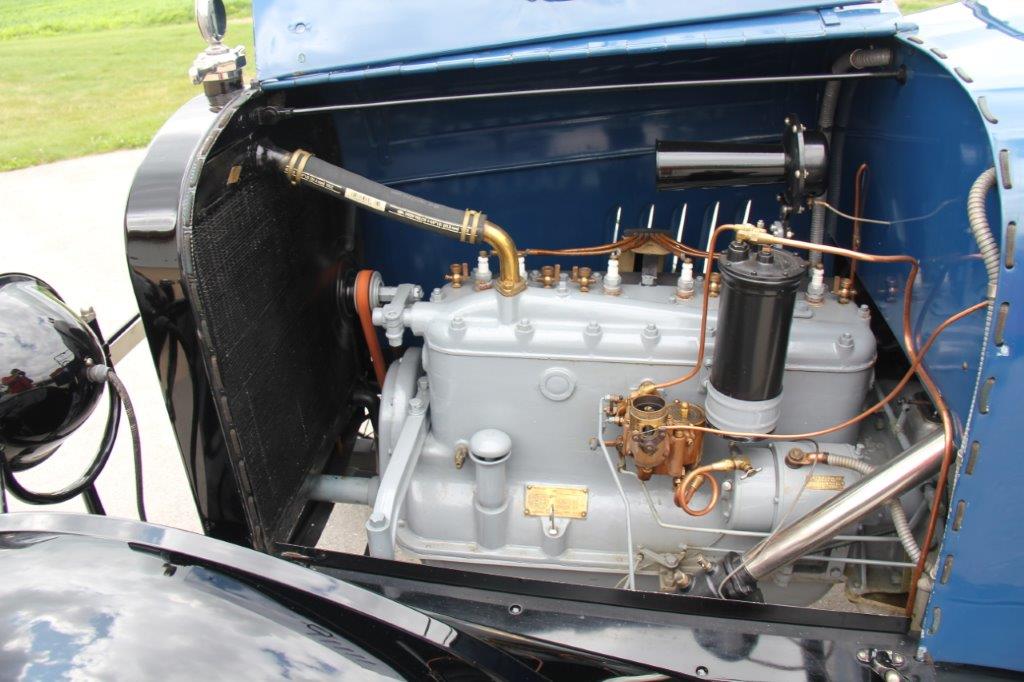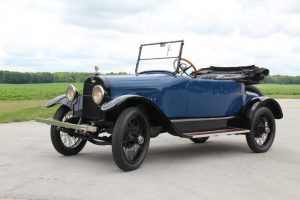1917 Abbott-Detroit 6-44 Four-Passenger NO 02
The Abbott-Detroit Motor Car Company was founded in Detroit in 1909. Cars could be had with either four or six-cylinder Continental engines. It was considered powerful and well-designed.
This 1917 model uses a 3.7-liter straight-six making an estimated 44 horsepower. Although the body looks like a two-door, two-passenger roadster, there are actually two seats directly behind the driver – a layout common in modern coupes, but not something you see too often in cars from a hundred years ago. Also, this car is listed as “bigger than it looks in the pictures,” which sounds about right when you see some of the detail shots.
Abbott-Detroit relocated to Cleveland in 1916 and was renamed the Consolidated Car Company. They badged their cars as Abbott’s, although the 1917 model you see here is badged as an Abbott-Detroit. The company went bankrupt in 1918 and was liquidated the following year.
Abbott-Detroit cars were guaranteed for life, but unfortunately, the company had long since closed before this car was discovered and restored. It comes with a great deal of documentation including documents from the factory such as stock certificates and correspondence, which is pretty cool!
The Early Years
The first self-propelled “horseless carriage” was built using a steam engine by Nicholas-Joseph Cugnot in France in 1789. In the 1830’s Robert Anderson of Scotland invented the first electric automobile.
In Canada, the first horseless carriage, a steam car, was built in Stanstead Quebec by Seth Taylor in 1867. The first auto production company featuring internal combustion engines was started in Germany by Karl Benz in 1888.
In North America the pages of such magazines as Scientific American provided prints and articles about the latest version of the auto from around the world. So, production on this side of the Atlantic mushroomed. Every backyard mechanic or tinkerer knew they could build one of these things. The first car manufacturing company over here was the Duryea Bothers in Massachusetts 1893. By 1896 they had sold thirteen automobiles.
George Foote Foss of Sherbrooke, Quebec built the first automobile in Canada with an internal combustion engine in 1897. It ran about the town without brakes at 24 mph and violated the Empire-wide Locomotives on Highway Act of 1865 that set the speed limit for self-propelled vehicles at 3 km per hour in cities (4 km in the country) and required a crew of three, one to precede it carrying a red flag while the driver rang a bell to warn of their approach. In a strike for Canadian independence, Mr. Foss did not abide by the law.
By 1908 there were over a hundred auto manufactures in Canada. Names such as Russell (of Toronto), Tudhope (of Orillia), LeRoy (of Berlin), and the Galt (of Galt) were fine cars but could not compete against the mass production assembly lines now coming into use in the States. More and more, Canadian auto manufactures would be building Canadian versions of US models. And so by the end of WWI all of these independents were gone. Canada then lacked the population and financial capacity for independent auto companies to survive. Thus Ford of Canada was founded in Walkerville Ont in 1904 with McLaughlin of Canada building Buicks and eventually Chevrolets and Oakland models (see the Lang Collection 1930 Oakland All American Six) in their Oshawa plant starting in 1908.
Between 1900 and 1908 there were 408 companies making cars in the US. But over the next ten years most of these would go broke, be consolidated, or just faded away from the market. Most smaller “companies could not build the huge numbers of vehicles needed to keep the cost low as well as keep up with the technological advancements required to succeed in an industry that saw thousands of entrants and failures.”
Many of these companies built fine, beautiful vehicles that have disappeared except in the pages of history leaving very few actual examples of their handiwork and expertise. At the Lang Collection we are privileged to be able to showcase one of the few running examples of that time period in its 1917 Abbott-Detroit 6-44 Four Passenger. We are fortunate to have it as a representative of that explosive period of automotive growth.














